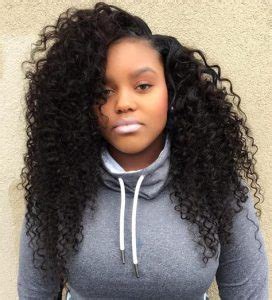Introduction
Hair loss is a common concern among men, with an estimated 50% of men experiencing significant hair loss by age 50. Hair systems offer a non-surgical solution to hair loss, providing a natural-looking, permanent alternative to other treatments. This comprehensive guide explores the world of hair systems for men, delving into every aspect from types and materials to maintenance and cost.

Types of Hair Systems
1. Surgical Hair Transplants
Surgical hair transplants involve removing hair follicles from a donor area, typically the back of the scalp, and transplanting them to the balding area. This permanent solution yields natural-looking results but comes with a higher cost and longer recovery time.
2. Non-Surgical Hair Systems
Non-surgical hair systems offer an alternative to surgery, providing a temporary or semi-permanent solution. These systems are attached to the scalp using adhesive, clips, or a combination of both.
Materials Used in Hair Systems
1. Human Hair
Human hair systems provide the most natural appearance and feel, but they require more maintenance and can be more expensive than synthetic hair systems.
2. Synthetic Hair
Synthetic hair systems are more affordable and durable than human hair systems, but they can look less natural and may not blend as well with existing hair.
3. Blended Hair
Blended hair systems combine human and synthetic hair, offering a balance of affordability, durability, and natural appearance.
Methods of Attachment
1. Adhesive Bonding
Adhesive bonding involves using a strong adhesive to attach the hair system to the scalp. This method provides a secure hold but requires regular maintenance and can be more comfortable than other attachment methods.
2. Hair Clips
Hair clips are small, metal clips that attach the hair system to the natural hair. This method is less permanent than adhesive bonding but allows for easy removal and can be more comfortable.
3. Combination of Adhesive and Clips
Some hair systems use a combination of adhesive and clips, providing a secure hold while allowing for some flexibility and adjustability.
Maintenance and Care
Regular maintenance is essential for the longevity and appearance of a hair system. Key maintenance steps include:
- Washing and conditioning the hair system with sulfate-free products
- Brushing and combing the hair to remove tangles and distribute natural oils
- Touching up the attachment as needed
- Avoiding harsh chemicals and heat styling
Cost of Hair Systems
The cost of a hair system varies widely depending on the type, material, size, and complexity of the system. However, the average cost of a non-surgical hair system ranges from $2,000 to $6,000.
Benefits of Hair Systems
1. Improved Appearance
Hair systems enhance the appearance of the wearer, making them feel more confident and attractive.
2. Permanent Solution
Surgical hair transplants offer a permanent solution to hair loss, while non-surgical hair systems provide a semi-permanent or temporary solution.
3. No Downtime
Non-surgical hair systems do not require downtime after application, allowing the wearer to resume normal activities immediately.
Drawbacks of Hair Systems
1. Cost
Hair systems can be expensive, with surgical transplants costing thousands of dollars and non-surgical systems ranging from $2,000 to $6,000.
2. Maintenance
Hair systems require regular maintenance, such as washing, conditioning, and touching up the attachment, which can be time-consuming and costly.
3. Discomfort
Some hair systems can be uncomfortable to wear, especially if they are not properly fitted or if the adhesive is too strong.
Tips and Tricks
- Choose a reputable hair system provider who has experience working with men.
- Consider your individual needs and lifestyle when selecting a hair system type and material.
- Follow the maintenance instructions carefully to extend the life of your hair system.
- Avoid using harsh chemicals or heat styling on your hair system.
- Be patient and realistic with your expectations. Hair systems take time to get used to and may require some adjustments.
Conclusion
Hair systems offer a valuable solution to hair loss for men, providing a natural-looking, permanent or semi-permanent alternative to other treatments. By understanding the different types, materials, methods of attachment, maintenance requirements, and costs involved, men can make informed decisions about hair systems and achieve their desired hair goals.
| Type of Hair System | Method of Attachment | Maintenance | Cost Range |
|---|---|---|---|
| Surgical Hair Transplants | Surgical | High | $5,000-$15,000+ |
| Non-Surgical Hair Systems | Adhesive Bonding, Hair Clips, Combination | Moderate | $2,000-$6,000 |
| Human Hair Systems | Natural | High | $2,500-$6,000 |
| Synthetic Hair Systems | Affordable | Low | $1,000-$3,000 |
Pros:
- Improved appearance
- Permanent or semi-permanent solution
- No downtime
Cons:
- Cost
- Maintenance
- Discomfort (potential)
